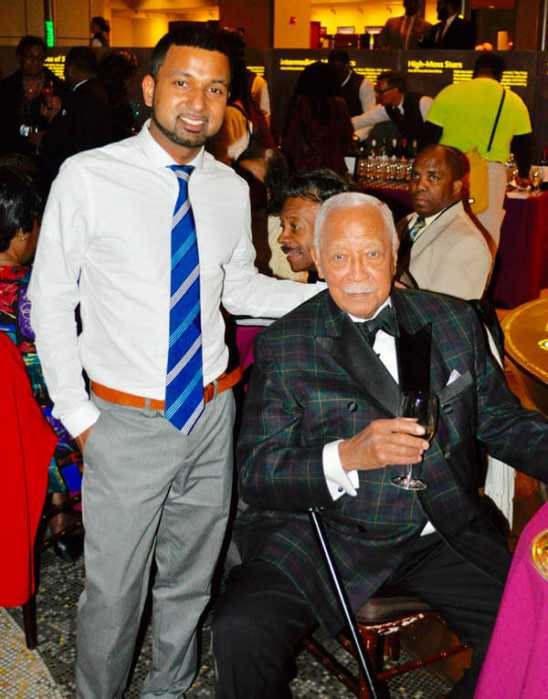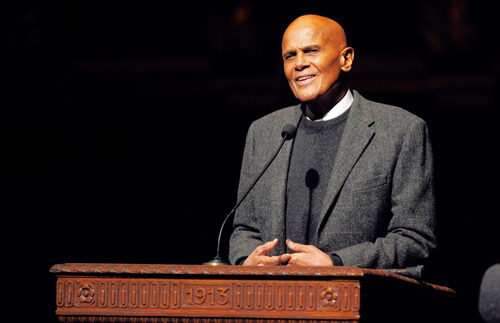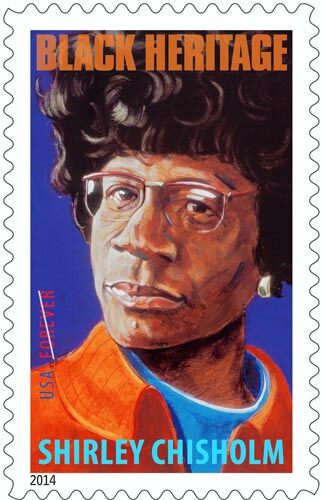The flat refusal a young Marian Anderson got from the Philadelphia Music Academy (later becoming University of the Arts) when she tried enrolling there, was presumably not the only time a person of color was rebuffed because the school was segregated. School officials were probably not unduly chagrined upon subsequently realizing they had turned their backs on Anderson’s incomparable, world-renowned talent as a classical singer – moreover, one whose humility and gracious manner served her well as a trail-blazer in the oppressive racial divisiveness then existing.
Anderson, born in 1897 in Philadelphia, PA, was the eldest of three girls in a devout Christian family that was very much involved in church activities. From quite early it became obvious that she was unusually gifted in singing, which landed her in the church’s junior choir at age six. As her talent continued to shine through in those juvenile years, Anderson found herself being thrust more and more into singing at events in the African American community of South Philadelphia and even beyond, being sometimes rewarded with small sums of money for performing. In time, pursuing a singing career became her clear choice going forward.
Accessing the necessary vocal training, even more of a key requirement because of Anderson’s preference for classical and inspirational material, was challenging, given the family’s strained economic circumstances — a condition exacerbated by her father’s death when she was just 12. Stepping in to fill the breach were the Andersons’ extended family in Union Baptist Church and others in the wider African American community who were determined that such talent as Marian had displayed deserved to be given whatever support was needed. Her first big breakout opportunity came in 1925 when she got to perform with the New York Philharmonic, after winning a contest organized by the esteemed orchestra. She did her debut performance at Carnegie Hall in 1928. With each high-profile appearance, Anderson’s acclaim as an artist of singular ability grew, the extraordinary texture of her rich contralto wowing critics and audiences alike.
Anderson’s standout qualities as a singer were of course no buffer against institutionalized prejudice in American society. Like so many others in the arts who ran up against color constrictions, she looked to Europe as a more welcoming alternative. In tours all over Europe she was a sensation. Along the way Anderson impressed and befriended some of the luminaries of the music world, among them the great French composer, Jean Sibelius. In 1935, while on tour in Salzburg, Austria, she received one encomium that would be forever linked to the Anderson legend, the noted conductor Arturo Toscanini commenting that she possessed “a voice heard once in a hundred years.” Anderson was also invited by some European opera houses to appear in their productions, invitations she declined because she wasn’t trained in acting.
It was at the urging of impresario Sol Hurok, who became Anderson’s manager in 1934, that she agreed to resume touring in the U.S. It eventually led to the biggest single event built around her — her historic concert at Washington’s Lincoln Memorial on April 9, 1939. It had its genesis in the Daughters of the American Revolution (DAR) denying permission for the use of Constitution Hall for a concert by Anderson. The ensuing uproar, including mass resignations from the DAR, first lady Eleanor Roosevelt among them, led to the federal government arranging for the Lincoln Memorial event, which attracted an estimated 75,000 crowd, and a radio audience of millions. Anderson characteristically shifted credit away from herself, saying the momentous event “was brought about by many people whom we will never know.”
Although she wouldn’t herself be given to proclaiming it a chest-thumping triumph, one major frontier Anderson reached in the latter part of her illustrious career was becoming, in 1955, the first African American to perform with New York’s Metropolitan Opera. But alongside the high regard in which she was universally held as an artist, the charm and grace Anderson exuded only added to her allure. Those personal qualities surely factored into her being tapped for special roles like goodwill ambassador for the State Department, when she traveled all around the world, and U.S. delegate to the United Nations Human Rights Committee. Through it all, she was an ever-present voice in the 1950s-60s civil rights movement, notably performing at the historic 1963 March on Washington. Anderson retired from performing publicly in 1965.
When she died in 1993 at age 96, Marian Anderson could take her leave knowing she had not only bequeathed to America and the world a gift of rare artistic beauty for the ages, but she had also, with great dignity, taken her place in the forefront of the arduous justice struggle for people of color.

























